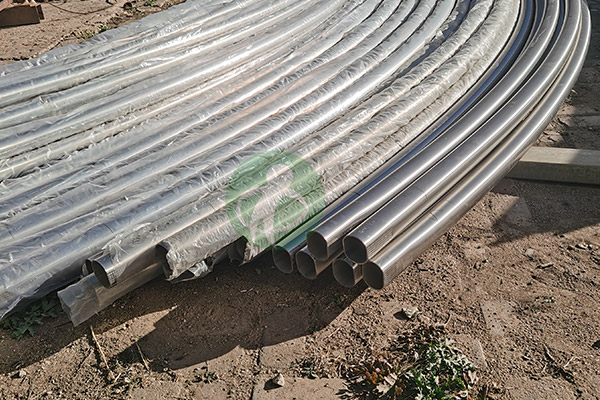Redefining the construction industry with innovative solutions, cuttin-edge technology and sustainable practices
Profile Bending 2025-06-14
The field of precision engineering has undergone significant transformations in recent years, with China emerging as a global leader in this domain. One of the key areas driving this change isprofile bending, a process that shapes metal and other materials into specific profiles for various applications. Hohhot Jinzhan Profile bending factory explores the latest innovations in China profile bending and their profound impact on the future of precision engineering.
Overview of Profile Bending
Profile bending is a critical manufacturing process used to create curved or bent sections of materials, particularly metals. These bent profiles are essential in industries such as construction, automotive, aerospace, and machinery. The precision required in profile bending is paramount, as even the slightest deviation can lead to significant structural weaknesses or functional failures.
Advancements in Technology
China profile bending industry has seen remarkable technological advancements that enhance efficiency, accuracy, and versatility. Key innovations include:
1.Computer Numerical Control (CNC) Technology: The integration of CNC technology into profile bending machines has revolutionized the manufacturing process. CNC systems allow for automated, precise control of bending angles and radii, reducing human error and increasing production speed. This technology also enables the production of complex shapes that were previously challenging to achieve.
2.3D Modeling and Simulation Software: Advanced software tools now allow engineers to create detailed 3D models of the desired profiles before actual bending occurs. This simulation capability helps identify potential issues early in the design phase, allowing for modifications that prevent costly mistakes during production.
3.Hybrid Bending Techniques: China has pioneered the development of hybrid bending techniques that combine traditional methods with contemporary technologies. For instance, processes that blend hydraulic and mechanical bending offer improved flexibility and precision, making it possible to work with a wider variety of materials and thicknesses.
4.Material Science Innovations: The development of new materials, including high-strength alloys and composites, has opened new avenues for profile bending. These materials can be bent to tighter radii without compromising structural integrity, enabling more efficient designs in various applications.

Industry Applications
The innovations in China profile bending have found applications across multiple sectors:
-Construction: In the construction industry, bent profiles are crucial for creating structural elements such as beams, columns, and arches. The advancements in bending technology allow for more intricate designs that enhance aesthetic appeal without sacrificing strength.
-Automotive: Profile bending is vital in the automotive sector for manufacturing components like chassis, roll cages, and exhaust systems. The ability to create lightweight yet strong profiles contributes to improved fuel efficiency and overall vehicle performance.
-Aerospace: The aerospace industry demands the highest levels of precision and reliability. Innovations in profile bending enable the production of complex components that meet stringent safety and performance standards.
Future Trends
As the demand for precision engineering continues to grow, several trends are likely to shape the future of China profile bending:
1.Increased Automation: The trend toward fully automated production lines will streamline operations, reduce labor costs, and further enhance precision in profile bending.
2.Sustainability: As industries strive for greener practices, innovations in profile bending will focus on reducing waste and energy consumption. Techniques that optimize material usage and recycle scrap will become increasingly important.
3.Smart Manufacturing: The integration of IoT (Internet of Things) and AI (Artificial Intelligence) into profile bending processes will enable real-time monitoring and predictive maintenance, improving efficiency and reducing downtime.
4.Customization: With the rise of mass customization, profile bending technologies will evolve to accommodate smaller production runs with highly customized designs, catering to specific client needs.
The innovations in China profile bending are not only transforming the manufacturing landscape but also setting new standards in precision engineering. With advancements in technology, materials, and applications, the future of profile bending looks promising. As China continues to lead the way, industries worldwide will benefit from the enhanced capabilities, efficiency, and creativity that these innovations bring to the table. The ongoing evolution of profile bending is a testament to the power of engineering innovation in shaping a better future.